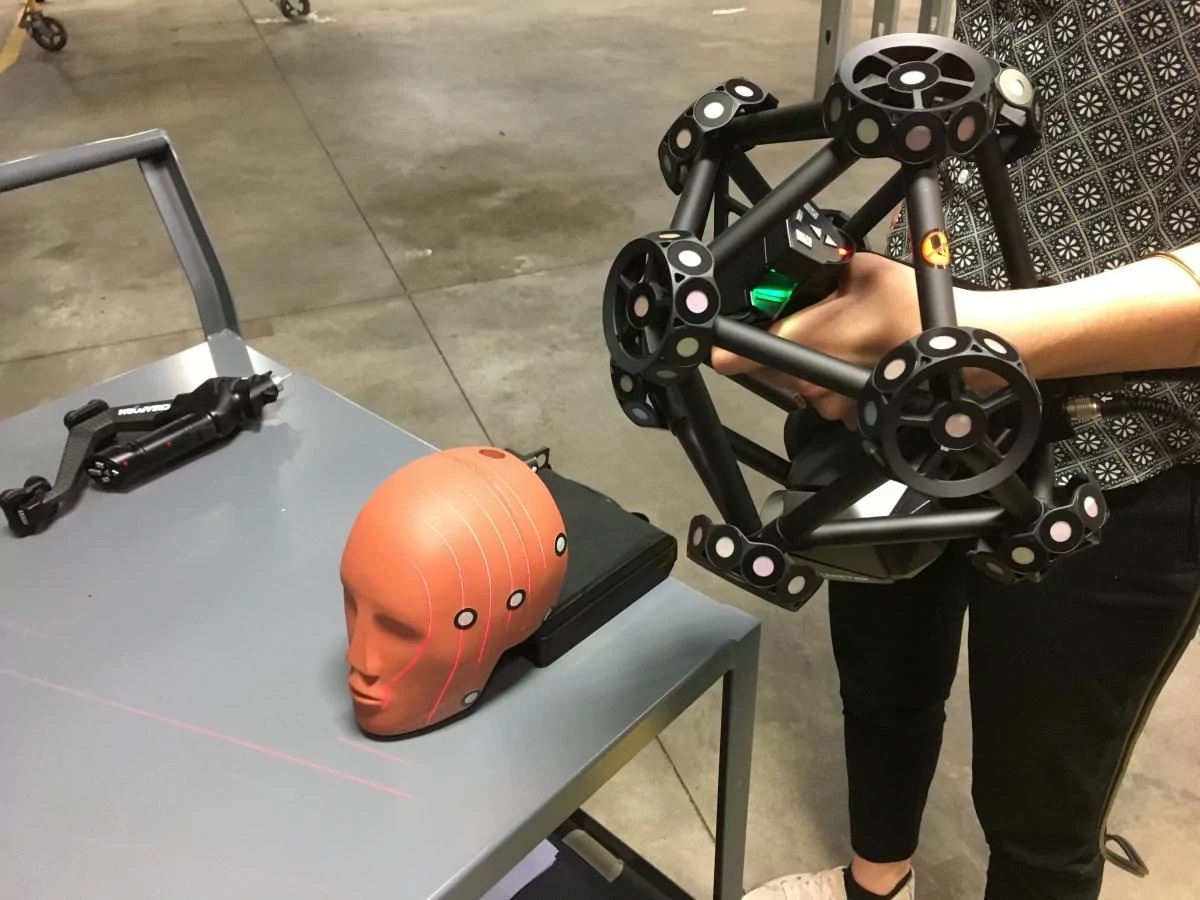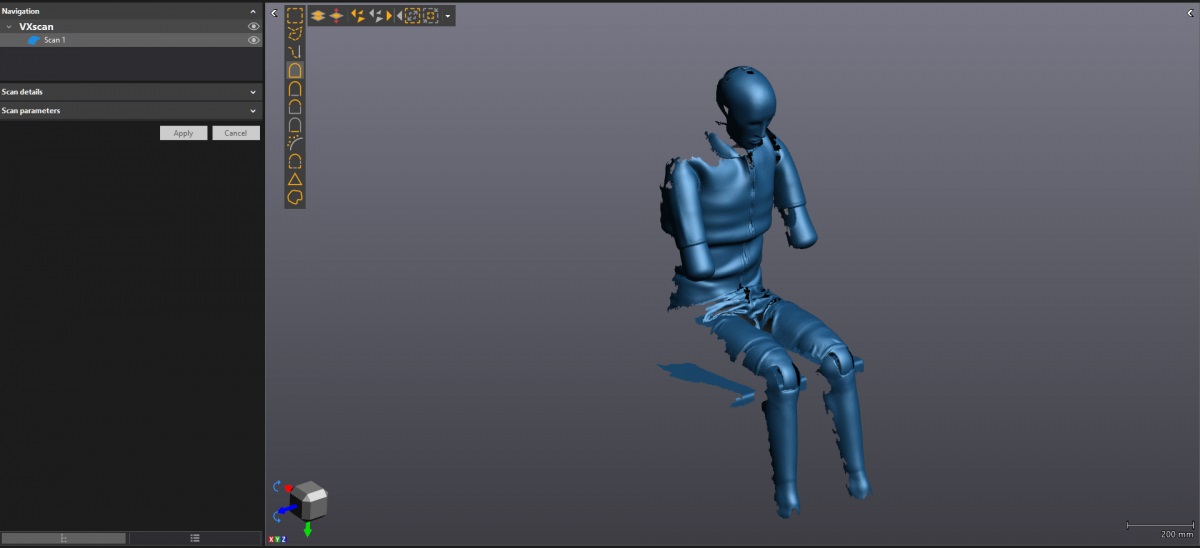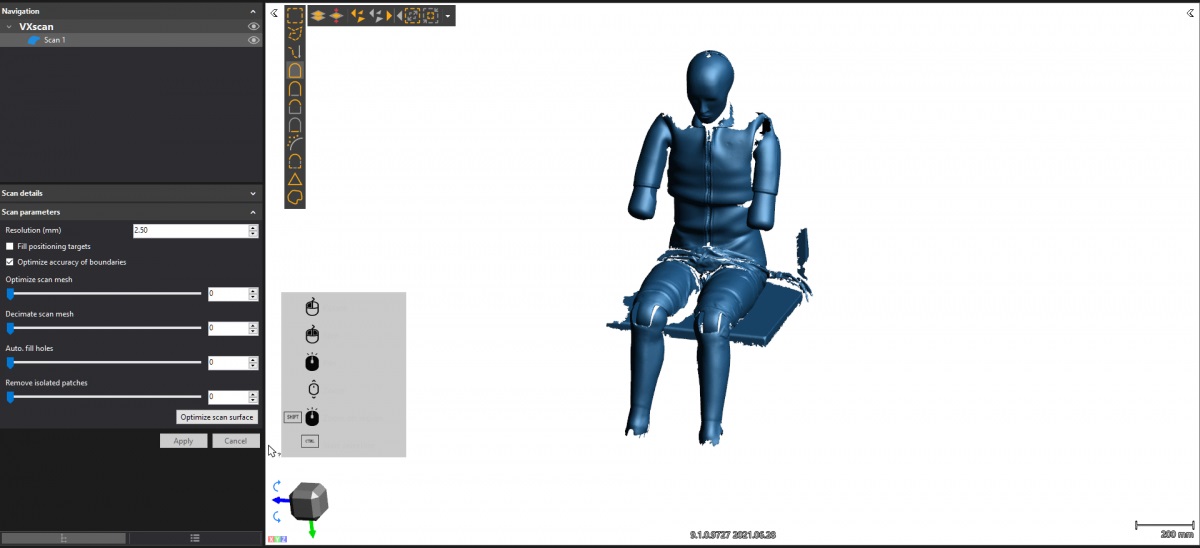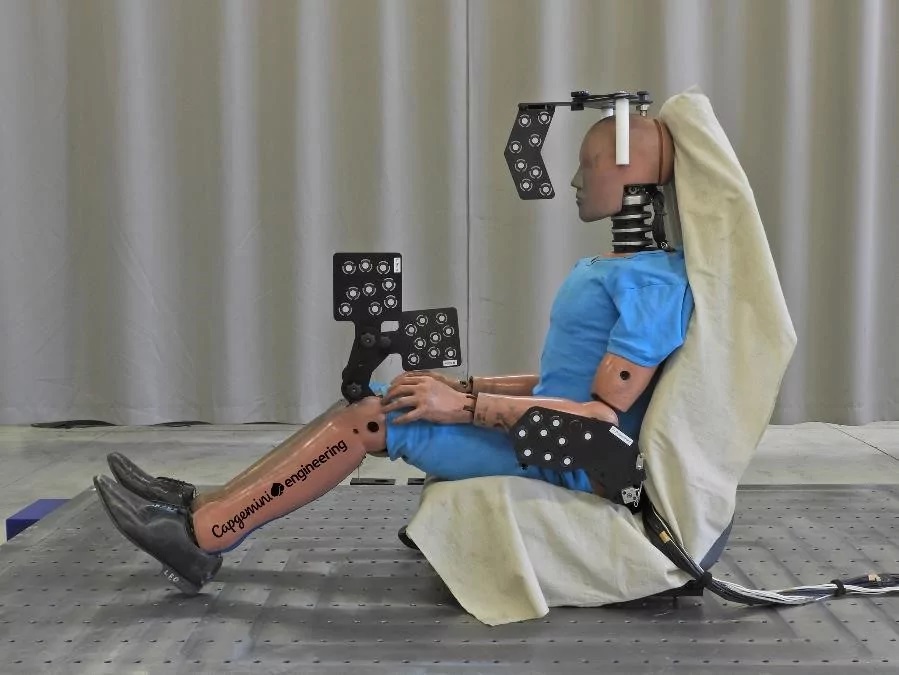- Article
- Related
Inefficient crash test dummy positioning
Quality control and safety have long been issues in the automotive industry. As vehicle design and ensuing manufacturing methods evolve at a rapid-fire pace, OEMs are under increasing pressure to develop safer cars that are aligned with stricter government crashworthiness regulations.
Physical crash tests are conducted with vehicles to meet minimum score thresholds and rating requirements. During these tests, dummies are used to measure the forces and likely injuries sustained by drivers, passengers and vulnerable road users. Data is gathered from the dummies and crashed vehicle to inspect physical deformation, the performance of restraint systems, and other on-board hazards.
In the past, positioning crash test dummies to acquire accurate and reliable impact data was very long and complicated. Many measuring points had to be added to the dummy so that an articulated arm, for example, could take precise measurements. A lot of back and forth occurred to ensure, in the software, that the test dummy was systematically positioned in exactly the same way to eliminate skewed test results.
What’s more, the type and volume of dummy crash tests that needed to be conducted only exacerbated inspection timelines.
Compromised accuracy with traditional dummy positioning
For inspection purposes, crash test dummies have to be installed in a precise, repeatable and recordable manner. Quality control teams are required to establish protocols to physically set up the dummies’ postures as well as the test arrangement (the seat geometry, for example).
However, only relying on human intervention to physically position crash test dummies, which was often the case with conventional methods, compromised the accuracy and reliability of test results. How could inspectors be absolutely sure that each dummy was set up in exactly the same position during each crash test and for each type of vehicle make?
While camera-based measuring was often used as aids to position dummies for both frontal offset and side impact crash tests, they nevertheless did not guarantee the level of precision needed for reliable results. Test-to-test variability therefore increased
New dummy positioning tools and software to tackle efficiency and challenges in crash test inspections
Today, there are new tools and software solutions that can facilitate the measurement and positioning of dummies. For example, portable optical CMMs and dynamic tracking measurement software have become indispensable solutions for improving crash test dummies.
Portable: Portable optical CMMs and dynamic tracking measurement software can easily be transported and used right near the crash test inspection area.
Easy to use: These types of systems are plug-and-play; their user-friendly interfaces mean that operators of any skill level can use them. No metrology expertise required!
Fast: Optical CMM and dynamic tracking measurement software can quickly carry out real-time measurements of all 3D points that are required for the alignment of dummies before a crash test.
Efficient: Dummy positioning tools help inspectors to bring the dummies into the prescribed position more quickly than via traditional methods.
Accurate: Dummy positioning software and tools are highly accurate; inspection teams can therefore assess crashworthiness results with confidence.
Reliable crash test inspections can be accelerated with new technologies
By adding portable probing systems, optical CMMs and dynamic tracking measurement software to quality control workflows, automotive OEMs can better conduct critical crash test assessments in shorter amounts of time. These technologies are game changers to speed up a manufacturer’s time to market.
- Faster data acquisition times: Thanks to their portability and performance, optical CMMs and dynamic tracking measurement software can speed up the positioning of crash test dummies. Positioning adapters can be quickly attached to the dummy’s hand, hips, and right and left knees; in the dummy positioning software, deviations from the target position for all points are instantly displayed in real time and highlighted in color. This means distances can be changed and the dummy moved until all values in the software are green.
- Improved accuracy for crash test dummy positioning: Dynamic tracking measurement software, along with optical CMMs and probing systems, can simultaneously and in real time, acquire measurements of up to thousands of 3D points per second. The level of accuracy these technologies offer far surpasses the precision of physical measurements by inspectors as well as camera-based solutions.
The Capgemini Engineering Passive Safety Center, based in Austria, is a renowned Category A service provider in the automotive industry for passive safety with more than 20 years of experience. It offers state-of-the-art know-how for crashworthiness, restraint systems and other passive safety-relevant indoor and outdoor issues, such as pedestrian protection and inner head impact. The development can vary from a single component to a complete vehicle.
The company made the switch from a camera-based measuring system to the HandyProbe portable probing system and MetraSCAN optical CMM 3D scanner. Capgemini Engineering also used Creaform’s innovative dummy positioning solution, which includes VXtrack and C-Track, to facilitate setup times.
Manfred Harrer, Senior Test Expert at Capgemini Engineering indicated that with the team’s new 3D measurement solutions, the time savings are enormous: inspectors can acquire data in four hours per crashed vehicle. Moreover, test projects can be simultaneously processed more efficiently because every test setup can be scanned in 3D, which was not possible with legacy tools. Maximum efficiency and accuracy help Capgemini Engineering provide the right—and safer—solutions to OEM clients.
NEED MORE INFORMATION ABOUT OUR SOLUTIONS?





